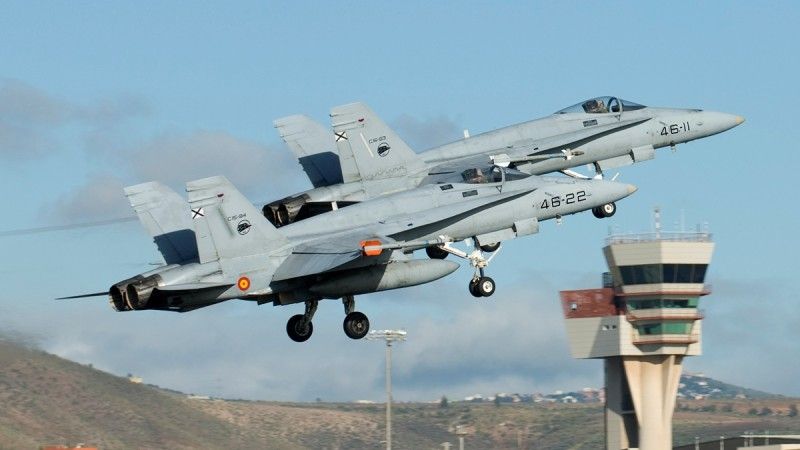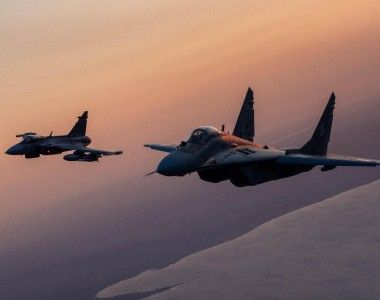The military spending of Spain and Poland

Since the outbreak of the war in Ukraine there has been a clear trend of increasing military spending in the budgets of various states, and this has also been the case in Spain. The resources allocated for the purpose of defence in the Spanish budget for 2023 had a spectacular increase compared to the budget of the previous year. The increase is aimed at approaching the 2% of GDP in military spendings, following the obligations enshrined in NATO’s treaty, to which both the Prime Minister and the Minister of Defence have outspokenly committed on several occasions. The King of Spain has also approved the plan to increase Spain’s military spending in order to improve the country’s security - as Paolo Pizzolo writes.
However, unlike Poland, Spain continues to be one the countries that spends less in defence withinthe NATO alliance, allocating only 1.09% of GDP to military spending in 2022 and thus scoringas the penultimate on the list, only surpassed by Luxembourg, with its 0.62%. While the government of Poland announced that it will make an unprecedented effort to allocate 4% of GDP for the Polish army, becoming the NATO country that will allocate the greatest amount of money in relation to GDP in defence, following the Polish example, Spain has decided to invert its trend and to invest more in defence. The defence spending enjoys the approval of Spanish citizens, with 73% of them agreeing with the new military investment and only 18% of them declaring to be against it. In this sense, Spain has been influenced by other EU and NATO countries like Poland, believing that military spending would contribute to guaranteeing Spanish protection and national interest.
The Spanish Councils of Ministers that have been held so far in 2023 have introduced budgetary modifications that have increased the military spending committed by the Spanish government. 581 million euros have been allocated for the expenses of the participation of the Spanish Armed Forcesin peacekeeping operations, 1.397 million euros for the financing of the Halcón program and 1.750 million for the modernization, evolution, and logistical support of the EF-2000 (III) combat aircraft. Specifically, the Halcón program consists of the acquisition of 16 single-seaters and 4 two-seaters fighter jets equipped with electronic scanning radars (E-Scan), which should reinforce the Eurofighter fleet of the Spanish Air Force, allowing the progressive replacement of the F-18.
Moreover, 834.9 million have been allocated to the joint Santiago Electronic Warfare program, the SIMFAC air support simulator and a Tactical Training system for the T.21 aircraft (flight simulator), a vessel for the Navy Diving School, a deployable air operations coordination centre or the MISTRAL System (light short-range missile system).They will also be used for the acquisition of drones (within the Master Plan for Remotely Manned Aerial Systems – RPAS), equipment and material for the Drone Unit and various infrastructures.
Additionally, 476 million will be dedicated to the Pizarro Program (combat vehicles), the NH-90 (II) Program – consisting of the renewal of helicopters – and the VCR 8X8 Program (production of 348 8×8 wheeled combat vehicles). Another 1.970 million will be dedicated to the New Chain Support Vehicle Program (VAC), consisting of the progressive replacement of the fleet of Armored Caterpillar Transport (TOA) vehicles by VACs. Some resources will provide for the acquisition of two Coastal Survey Vessels (BHC) and the High Performance Tactical Remotely Manned Air Systems (SIRTAP).
Finally, the last increase in Spanish military spending will be devolved for the acquisition of 8 MH-60R multipurpose helicopters. These new devices will replace the fleet's naval tactical helicopters, currently based on the SH-60B model, and will allow the Navy to cover its needs and update and strengthen their capacities.
In conclusion, the Polish military build-up resulted in a revert in Spain's policy to dedicate little resources to military spending. The war in Ukraine confirmed even in Spain, a NATO country far from the theatre of operations, the necessity to invest in the strengthening of its defence capacities, in line with a general European and global trend.
Paolo Pizzolo
References:
Xavier Bohigas, 2023, "El gasto militar del Estado español y el de los estados de su entorno",Público, 24 March.
Fernando Cancio, 2023, "España sigue como el segundo país de la OTAN que menos gasta en Defensa",La Razón, 21 March.
Sergio Velasco, 2023, "Polonia se convierte en el país de la OTAN que más PIB gasta en Defensa",El Liberal, 14 February.
Óscar F. Civieta, 2023, "El gasto militar de España aumentó en casi 9.000 millones de euros durante 2023"La Marea, 2 May.
The research has been supported by a grant from the Faculty of International and Political Studies under the Strategic Programme Excellence Initiative at Jagiellonian University.



